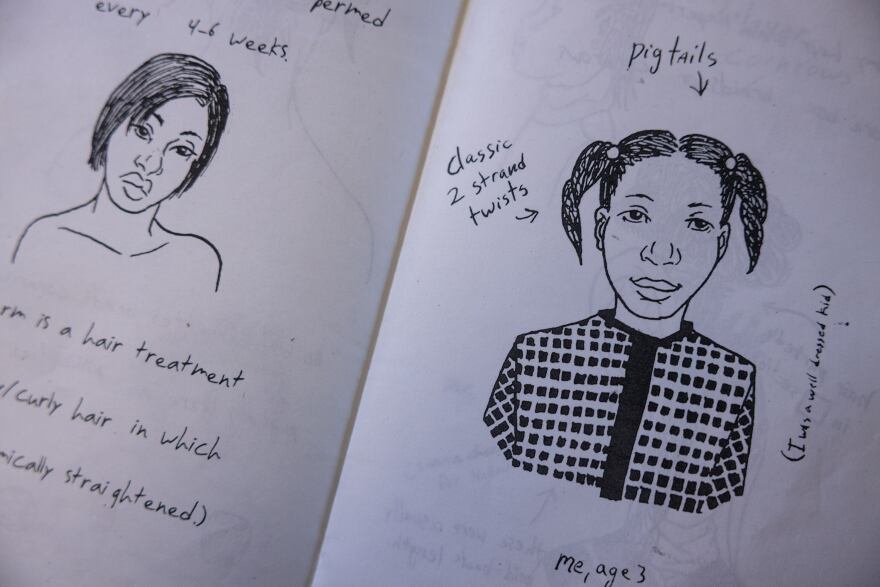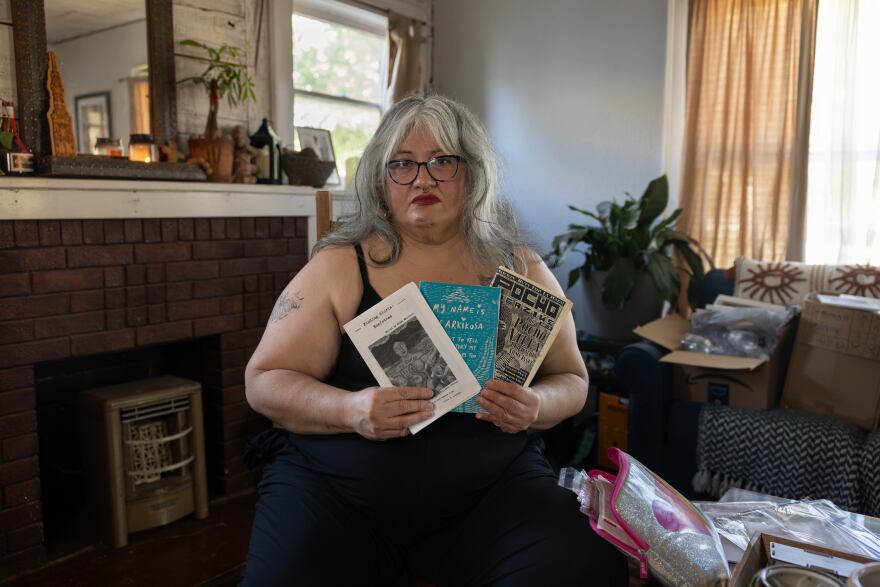Zines have carried Ofelia Faz-Garza through major moments in her life.
Back in the ’90s during her college years when she was learning about the Chicano movement. In her 50s when she came out as a queer woman. Last year, when her mother passed away after battling breast cancer.
“There's just something about having a tangible item that you can hold in your hand, that you carry in your bag, on your person that you sit and revisit without having to need anything else,” she said.
Throughout history, she said zines – short for “fanzines” – have been used as a form of self expression and dialogue. The self-published works were a part of the Harlem Renaissance, punk, queer and feminist movements.
This interview has been lightly edited for clarity.
Can you describe your zine collection?
Zines are basically homemade books. They have a long history in this country and have been part of the Civil Rights Movement. In the ’90s, they were a part of the riot girl movement and have really gained a resurgence again with the younger community.
I started collecting them in the ’90s, and I still have a few of my zines from the ’90s. I have a lot of zines by local creatives. I think my favorites are the ones my children have made and then the ones that kind of focus on topics or themes that are near and dear to me like women's issues and chicanista history and things like that.
Where did you get your zine collection from?
Whenever I go to community events, there's always at least one person who has some. I've found some too, like people that just kind of make them and leave them out in the community and I think those are probably the nicest surprise and nicest place to get those.
I have collected them over the years. I love going to markets and I love any time there are art shows and I love collecting them from book stores. When I go to indie bookstores, just pretty much anywhere I go, I always try to look to see if I can find some.
Where is your zine collection in your home and why did you place it there?
My zine collection is in our living room. We live in an older home and it has built-in bookcases and so it's usually the first place where people come in when they come in to visit. It's a place to showcase them there.
I love showing off my zines. My kids hate it because I'm always talking about them. But I love to show off the zines. I pull out the pouch, and I'm more than happy to have people check them out.

How does having your zine collection make you feel?
I really enjoy them because they're accessible because anybody can make it, and you can make them out of anything. I've made them out of like Whataburger paper sacks, so it's a fun way to recycle and I love making them with kids, too. But I think it's the accessibility that just makes me feel like we're capturing thoughts and sentiments and just what people are going through in a way that’s easy to do.
How does your zine collection represent home for you?
It connects me to my youth because I started making them and collecting them when I was a college student. So it's that idea of memory and that connection to the Ofelia that I used to be, while still allowing me to kind of grow into the person that I am now.
I'm 54 years old and I make zines, too, and so the zines that I used to make compared to the zine that I'm making now are very different and so it's just part of growth. I think that's why they're so important for me because it is that archive of who I used to be, who I was maybe five, ten years ago, and who I'm becoming as I age.
Arts Access is an arts journalism collaboration powered by The Dallas Morning News and KERA.
This community-funded journalism initiative is funded by the Better Together Fund, Carol & Don Glendenning, City of Dallas OAC, The University of Texas at Dallas, Communities Foundation of Texas, The Dallas Foundation, Eugene McDermott Foundation, James & Gayle Halperin Foundation, Jennifer & Peter Altabef and The Meadows Foundation. The News and KERA retain full editorial control of Arts Access’ journalism.








